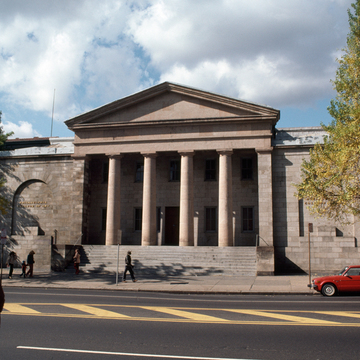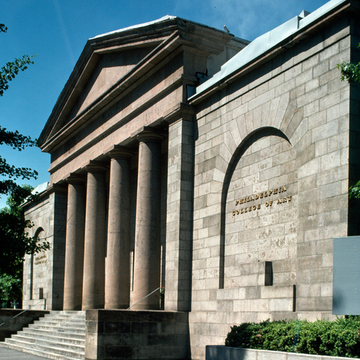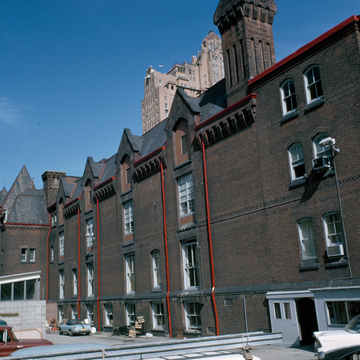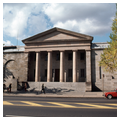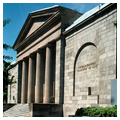You are here
University of the Arts (Pennsylvania Institute for the Deaf and Dumb)
The central building of the University of the Arts is a spare essay in neoclassicism. Evidencing the rise of artistic personality, Haviland's primal geometry typically contrasts with the delicacy of William Strickland's work. Here, Haviland used a deliberately archaic manner with unfluted Doric columns carrying a muscular entablature of Egyptian character. The blind niches in the flanking wings were to be ornamented with symbols of the new sign language that connected the deaf to the wider world. The brick rear wings, added by Furness and Hewitt, adopt an industrial vocabulary to spaces intended to provide training in the skills needed for Philadelphia's industrial workforce. Massive chimneys, now shorn of their phallic tops, allude to industry while large windows, placed where they are needed, contrast Furness's functional logic with Haviland's historical forms. In 1893, with the departure of the school to a suburban setting in Mount Airy, the building was adapted to serve as the Pennsylvania Museum and School of Industrial Art, an offshoot of the Centennial Exhibition intended to train Philadelphia workers and artisans in crafts that would enhance the city's manufacturing base. Among its students were such architects as Edgar V. Seeler and William L. Price.
Writing Credits
If SAH Archipedia has been useful to you, please consider supporting it.
SAH Archipedia tells the story of the United States through its buildings, landscapes, and cities. This freely available resource empowers the public with authoritative knowledge that deepens their understanding and appreciation of the built environment. But the Society of Architectural Historians, which created SAH Archipedia with University of Virginia Press, needs your support to maintain the high-caliber research, writing, photography, cartography, editing, design, and programming that make SAH Archipedia a trusted online resource available to all who value the history of place, heritage tourism, and learning.


